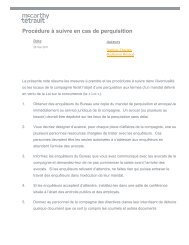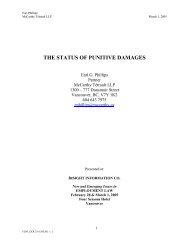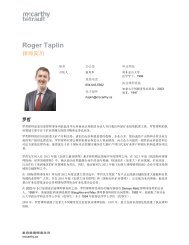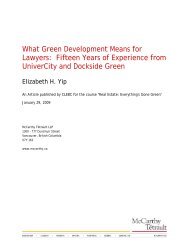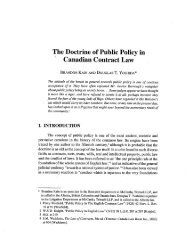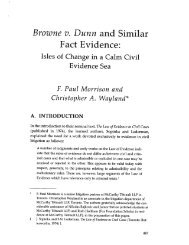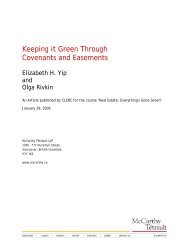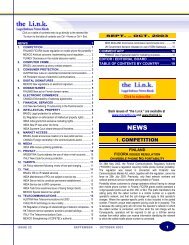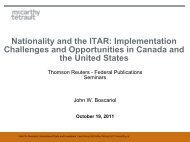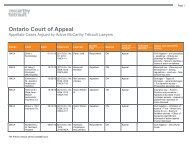Presentation Material - McCarthy Tétrault
Presentation Material - McCarthy Tétrault
Presentation Material - McCarthy Tétrault
Create successful ePaper yourself
Turn your PDF publications into a flip-book with our unique Google optimized e-Paper software.
560600/422632<br />
MT DOCS 11864055v1G<br />
24<br />
Chris Falk<br />
Stefanie Morand<br />
<strong>McCarthy</strong> Tétrault LLP<br />
subsection 40(3.6) is considered. In the authors’ view, it is not self-evident that the combination<br />
of subsections 40(3.6), 40(3.61) and 164(6) requires an iterative reading of the provisions (i.e., a<br />
reading which seems absurd even without regard to context and purpose). Rather, given the<br />
provisions of subsection 40(3.61), even without regard to context and purpose, the provisions<br />
are arguably intended to be read with subsection 164(6) determining the carry-back and<br />
subsection 40(3.6) denying the portion of the loss that is not carried back (the “Alternative<br />
Reading”).<br />
Having regard to the context and purpose of subsections 40(3.61) and 164(6), the authors are<br />
of the view that:<br />
• the iterative reading clearly leads to an absurd result;<br />
• in interpreting the provisions, it should be assumed that the absurd result was not<br />
intended unless no other reading is possible;<br />
• another reading (i.e., the Alternative Reading) is possible and should be preferred since<br />
it better gives effect to context and purpose.<br />
Extent of the Issue<br />
The authors do not agree with the CRA’s statement that the incidence of the circularity issue is<br />
“likely quite limited” if the iterative reading applied.<br />
Further, in the authors’ view, the reasons given by the CRA in support of this statement suggest<br />
that the CRA’s assessment of the prevalence of the issue may be based on an incomplete<br />
understanding of the issue. More particularly, the authors note as follows:<br />
• Reason 1. “One would expect that typically, estates should not realize significant gains<br />
in their first taxation years, as assets acquired at the time of death would generally be<br />
acquired at fair market value pursuant to subsection 70(5).”<br />
Comment: As noted above, it is immaterial whether the estate realizes<br />
“significant” gains. The concern is that given the drafting of the provisions, even<br />
a nominal gain may preclude the estate from carrying back any amount pursuant<br />
to subsection 164(6) if the provisions are interpreted iteratively.<br />
• Reason 2. “The ability to distribute assets of the estate to its beneficiaries on a rollover<br />
basis pursuant to subsection 107(2), where applicable, would avoid the generation of<br />
gains in the estate in respect of such asset dispositions.”<br />
Comment: In many cases, estate assets must be liquidated in order to fund<br />
estate expenses or to comply with instructions set out by the testator.<br />
Furthermore, a tax-deferred rollover pursuant to subsection 107(2) is generally<br />
not available in respect of distributions to beneficiaries who are not resident in<br />
Canada for purposes of the Act.<br />
• Reason 3. “Given the issue was identified in the above-referenced article, many<br />
practitioners are no doubt aware of it and are ensuring that capital gains are deferred<br />
beyond the first taxation year of the estate.”



